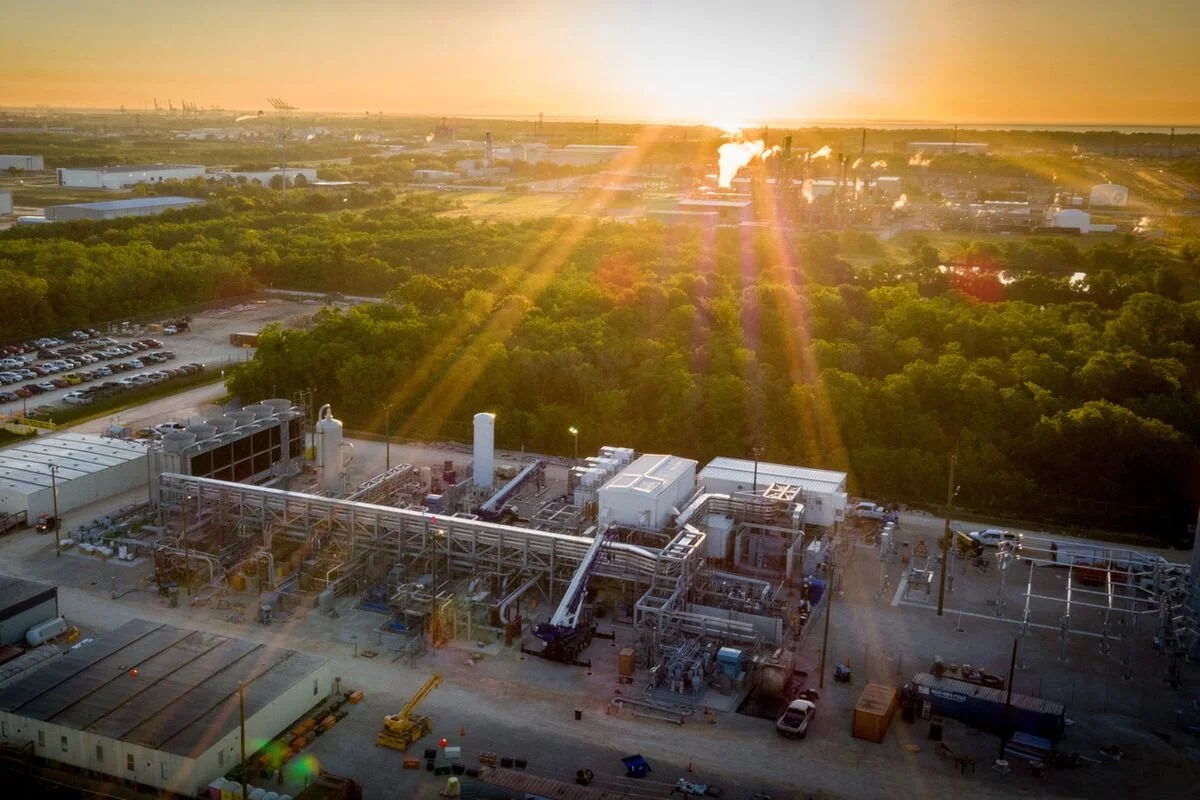NetPower’s Solution to Climate Change
Climate change is one of the 21st century’s most challenging problems. The continued burning of fossil fuels results in an increase of carbon dioxide and other greenhouse gases in the atmosphere, which has been linked to the gradual increase in the Earth’s overall temperature. Most people are reluctant to switch to alternative energy sources such as solar, wind, and hydroelectric because it is typically more expensive than conventional fossil fuels. In addition, the Chernobyl nuclear disaster has demonstrated that nuclear power is a high-risk solution. The ideal solution to this problem (as of today) is to produce electricity from hydrocarbons (fossil fuels) without releasing carbon dioxide and other greenhouse gases into the atmosphere. After years of research in alternative energy, a solution may finally exist. NetPower is a U.S. energy start-up that has built a power plant that has achieved net zero carbon dioxide emissions (1). NetPower’s system is both emissions-free and cost-effective compared to current electricity production in the U.S. today. In order to understand their system, it is important to first introduce thermodynamic cycles and how power plants work.
A power plant is a scaled-up heat engine. A heat engine is a device that converts heat energy into electrical energy using a cycle of thermodynamic processes. Most power plants use the Rankine cycle, which begins by burning fossil fuels to heat a working fluid. Water is often used as the working fluid because of its abundance and because it is relatively chemically inert, as opposed to most organic substances which are generally more reactive than water. The heat energy transferred to the working fluid results in a phase change from a liquid to a vapor. The high temperature and pressure fluid is then used to spin a turbine to generate electricity. The working fluid is then compressed back into a liquid so that it can be pumped back to its original state, thus completing the cycle. A process flow diagram of a simplified Rankine cycle is shown below in Figure 1 (2).
Figure 1. Rankine Cycle
There have been many variations of thermodynamic cycles, such as the Brayton, Otto, and Diesel cycles. The differences between cycles are rooted in different heat sources, working fluids, and process operating conditions. All of these cycles produce mechanical energy by using fossil fuels to heat the working fluid. The by-products are generally discarded into the atmosphere, which contributes to the greenhouse effect. NetPower has patented their own thermodynamic cycle, the Allam-Fetvedt cycle, that enables them to produce electricity with net zero carbon dioxide emissions. They have developed the first emissions-free natural gas power plant in the world (3).
The company has taken its inspiration from George Balanchine, the founder of the NYC ballet, who once stated “There are no new steps, just different combinations” (1). The Allam-Fetvedt cycle uses the “tried and true” components of most thermodynamic cycles but has put capturing carbon dioxide as its primary focus and producing electricity as its secondary objective (3). At their plant in La Porte, Texas, NetPower burns natural gas in the presence of pure oxygen and combines this with hot recycled supercritical carbon dioxide as its working fluid to spin a turbine and produce electricity (1). NetPower has demonstrated that this full-scale system works, and it has sold systems in New Zealand, Abu Dhabi, and London (3).
In conventional power plants, the separation and removal of combustion by-products results in a large additional capital cost (4). This increases the cost of electricity in conventional cycles by 50% to 70% (4). Since NetPower uses the carbon dioxide produced from the combustion reaction directly in their process, there is no need for this additional capital cost. NetPower’s process also generates industrial-grade nitrogen and argon, which it plans to sell to further drive down costs (1). On average in the U.S, electricity costs twelve cents per Kilowatt-hour (5). In an interview with Fox Business, NetPower CEO Bill Brown stated that the electricity they produce will be in the two cent range (3), which is significantly lower than what most Americans pay for electricity today.
Perhaps the only obstacle that stands in the way is America’s current power production infrastructure, which would need to be modified to the NetPower system and capable of supporting the Allam-Fetvedt cycle. This may be costly and time consuming but greatly beneficial in the long run. Future generations will benefit from both a cleaner atmosphere and lower electricity costs. NetPower may be more than just a step towards solving climate change; it may be the solution.
Works Cited
NetPower. We Can Achieve Net Zero CO2. NetPower. [Online] [Cited: May 1, 2020.] https://netpower.com/.
Muller-Steinhagen, Hans Michael Gottfried. Rankine Cycle. Thermopedia. [Online] [Cited: May 2, 2020.] http://www.thermopedia.com/content/1072/.
Brown, Bill. A US energy startup builds a power plant that produces no carbon emissions. Fox Business Network. s.l. : FOX, July 27, 2019.
Allam, Rodney, et al. Demonstration of the Allam Cycle: An Update on the Development Status of a High Efficiency Supercritical Carbon Dioxide Power Process Employing Full Carbon Capture. Durham : Elsevier, 2017.
U.S. Energy Information Administration. Electric Power Monthly. 2020.







